Whereas wooden chairs, tables, desks, and aparadors are arguably still relevant for 21st century lifestyles (unless one is not squeamish about using plastic furniture -- ugh), some other types of antique Filipino pieces have since become quite obsolete. For instance, since we gentlemen (admittedly sometimes rude) no longer go out into the streets with canes (baston) or hats (sambalilo) unlike our grandfathers and great-grandfathers (and we don’t dress in all-white suits either), one would think that a hat rack (a.k.a. a hall tree or bastonero) that was a standard piece of home furniture from at least the 19th century up to about 1940 would not be of any interest to us today.
And yet, the few hat racks that do come on the market these days get snapped up quickly, and at respectable prices. Even reproductions sell briskly, it appears. What are they being used for now? Christmas tree armatures?I’m guessing that most people simply want to position something interesting by their front doors. When its residents have tired of driftwood benches, fake sugarcane mills, or kinetic waterfall contraptions, an antique hat rack decorates a home’s entrance quite well, I believe. And today’s rarely-used baseball caps, sun visors, and other assorted headgear can be hung on them and become part of the decoration too. Plus, if your family is anything like mine, you’ll need a place for a dozen or more umbrellas of various diameters, lengths, and colors, some of which no longer operate properly but that you just can’t bear to throw out.
There is one other functional application for a hat rack, and that is to take a look at yourself before you step outside. For the vast majority of hat racks have a mirror. Our forebears (what a pompous term) went for the versatile and developed this type of indoor furniture that not only took their head coverings, canes, and parasols but also allowed them to check for facial smudges or misplaced hair strands.
Most hat racks offered for sale today have oval-shaped mirrors, like this one.
The little drawer is also useful for keeping keys – versatile! – and the pierced carving, frieze design, and wood inlay are typical features of early 20th century pieces.
Here’s another oval-mirrored example.
This specimen features intricate pierced carving and wood inlay
in floral and bird designs,
certainly desirable among hat racks today.
The collector-owner of this piece is also a prolific dealer, and generously reproduces it,
complete with the original inlay design, for others to enjoy.
And if one prefers it in a darker finish to enable the inlaid designs to stand out better, why, they have that too.
Here are a couple of less ubiquitous oval-mirrored types, both from the same private collection. The Art Deco carving and inlay on the crown of this first one are frequently seen on tables and chairs that are contemporary with it.
And this one, also from the Art Deco period, has a tall finely carved topper, much like a big-haired matron.
Here’s another Art Deco oval-mirrored one, with slight variations on the theme.
and so with this one.
This next one is also an oval-mirrored Art Deco piece, though I can’t help thinking that it might be one of those so-called “put-together” pieces, with salvaged parts from aparadors, plateras, or even chairs,
because of its topper that falls short of the required width – which simply does not look right.
Another oval-mirrored piece that I’ve seen also makes me suspect that the topper was just grafted on. What do you think?
Here is another good Art Deco piece, with geometric lines and two-toned staining.
I’ve come across several in antique shops just waiting for their replacement oval mirrors to be put in. Here’s one that is so simple that a carved wooden angel needs to be positioned above the drawer.
Here’s an oval-mirrored one in a pierced-carved, non-inlaid design.
Different, though potentially vertigo-inducing for some.
This one, spotted in an antique shop’s showroom, is probably a better-balanced design overall,
which, despite the absence of inlay, compensates with pierced carvings, wavy and pointy forms, and a floral topper.
Visiting a Taal house museum, I spotted this oval-mirrored cane stand – unusual because to begin with it was positively 19th century in origin and therefore Spanish-colonial-Victorian-neoclassical rather than by-now-becoming-boring Art Deco.
And it was oversized too, if you didn’t notice.
This one, in the home of an amiable collector-dealer, is also over-wide,
yet almost refreshingly severe in its simplicity.
Our penultimate oval-mirrored candidate was recently put out for auction, yet it reportedly did not sell. A bit mystifying since, based on this photo from the auction house's catalogue, it appears to be of a solid, well-constructed design.
Maybe that’s because its mirror wasn’t in the preferred perfectly-oval shape, but more of a flattened-oval, or whatever that’s called.
One can predict the same problem with this last oval-mirrored example, which I’m guessing did not exactly get snapped up for a respectable price.
Once we’ve eliminated all the oval mirrors, it almost becomes a free-for-all. Here’s a most unusual diamond-shaped mirror
in a wider-than-usual hat rack.
Another diamond-shaped mirror coming up, but this one is too small and too low to be of broad use. Maybe for midgets?
Rectangular mirrors are more practical, and several interesting examples have come on the market in recent years. Here’s one that I’m finding difficult to pin down – for some reason it reminds me of belly-dancing.
This one has a too-obviously-grafted topper. And perhaps the entire piece, being unusually in kamagong, is a commissioned reproduction.
This next one, in a prolific hoarder-dealer’s collection is a more desirable example, in my view.
Here's one that was being disposed of as part of a large lot of antique pieces by an empty-nesting family that was preparing to move to a smaller apartment. The mirror was gone but could be easily replaced, and the vertical spaces for the canes and umbrellas underneath could be easily reconstituted.
This simple geometric yet nonetheless appealing design was still very much a part of the household when it was photographed, though no hats or canes or umbrellas were in evidence.
This next rectangular-mirrored example was in a rather forlorn state when I saw it, as some parts appear to have gone missing or detached and the lower portion seems to have partially disappeared. A pity, since it was a not-so-commonplace 19th century neoclassical piece.
A collector-dealer managed to acquire another 19th century hat rack.
This fared better than the previous piece, as it was carefully restored. It was beautifully ornate and flamboyant, with seemingly all of its original metal-and-porcelain hooks accounted for, and a white-marble-top above the drawer besides.
And a courtesy lamp above the mirror to top it all off, very useful in case one was tiptoeing in late at night, or sneaking out before dawn.
Here’s another rectangular-mirrored reproduction in kamagong, and with bone inlay besides.
Well, it’s not really a hat rack, but a bathroom cabinet with a built-in wash basin. Yet it’s not extremely far off, and I felt we needed some variety at this point.
Sometimes, the rectangular mirrors have acquired arched tops. Here’s one example.
It gets more interesting once all the Art Deco decorative stops are pulled out. Here's another arch-topped one in the corner of a modern home.
I saw another very similar to that one,
in a Manila antique dealership, rather exorbitantly priced.
This rectangular-mirrored piece takes versatility into a different direction – providing the visitor seating while he or she awaits for the master of the house to emerge.
Sometimes, the rectangular mirror is narrow enough to be flattering to those of us with, er, body-mass-index issues.
Inevitably, rectangular mirrors can slim down further, as with this type of multi-armed hat rack, perhaps more appropriately referred to as a “hall tree” in fact.
A good number of this kind regularly show up on the market, with this next one even attempting an arched-top-and-bottom mirror.
With hall trees, the usual metal or metal-and-porcelain hooks are replaced by turned wooden pegs, the better to take assorted hats and articles of clothing with.
The strangest hat rack that I have seen has a mirror that would only be useful if one looked like Yoda or Gollum.
Sometimes, the mirror was dispensed with altogether, and the piece became more tree-like than even those previous examples. This one was offered by a very accessible dealer in Bulacan.
Admittedly, it looked more appropriate for taking the overcoats of the employees of a pre-war government office in Washington D.C., or those of visitors to a stately New York townhouse. But I thought it quite handsome, especially when refinished.
Of all the mirrorless hat racks that I have come across, the best looking one to my mind was this bastonero, which appears to be partly of kamagong.
This too was put up for auction recently, and, upon seeing the above photo in the auction house's catalogue, my attention was perked up enough to motivate me to submit a proxy bid. In the end, the piece got sold for just PHP 500 above my maximum offer. After adding this to my lengthy list of the ones that got away, I consoled myself with the thought that if I ever find myself down to my last PHP 500, it could have been worse had I won this auction – I could be certifiably broke!
The one that did not get away – because it was a private sale via our by-then regular antique dealer-restorer – was this unusual antique Art Nouveau-style piece, with delicate piercings and carvings.
It not only did not get away but it has also accompanied me to professional postings in three different countries in the span of just a few years.
And I don’t even have hats or canes to hang on it – just my dozen or so unserviceable umbrellas.Originally published on 3 November 2010. All text and photos (except as otherwise attributed) copyright ©2010 by Leo D Cloma. The moral right of Leo D Cloma to be identified as the author of this work has been asserted.
Original comments:
arcastro57 wrote on Nov 4, '10
We used to have a hat rack somewhere, but we gave it away. I wouldn't know what to do with it given my pint-sized house. I hang my caps and umbrellas on any available protruding nail in the house, and that also includes a santo's outstretched arm. Sacrilege.
|
rally65 wrote on Nov 4, '10
Too bad you gave it away -- you could have made a good trade for it.
I've seen somewhere someone use a decommissioned life-sized holy-water-font-holding angel as a pseudo-hat-rack -- the wings were the hangers for caps, the folds within the elbows took the umbrellas, and the font stood in place of the little drawer, to hold keys. But yes, too sacrilegious for me! |
telvirendra wrote on Jan 11
in india...during clonial time...there develop...queer abrivation of the same concept.....there ware no hats or umbrellas to hang ....yet art nouva and deco...colonial influnce...produced...free wall mounted mirror with small drawers for nick neck...minus the hooks for hanging....perticularly
made for servising class half indian and trying to be english.... |
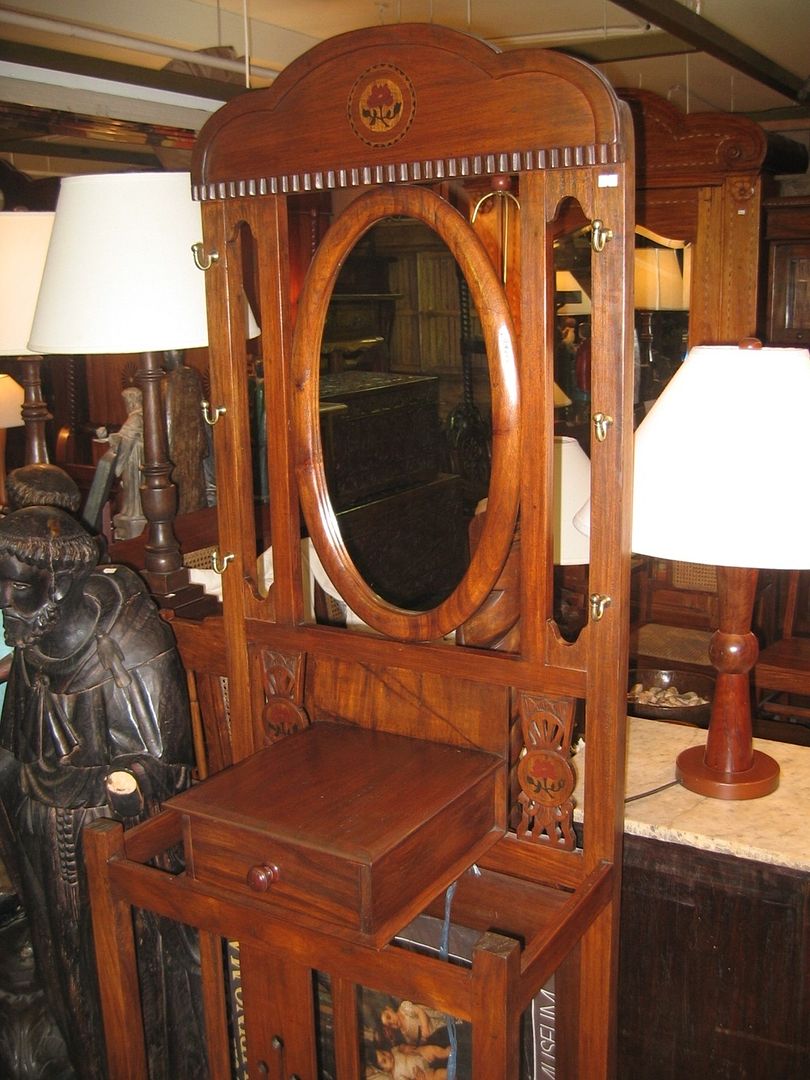

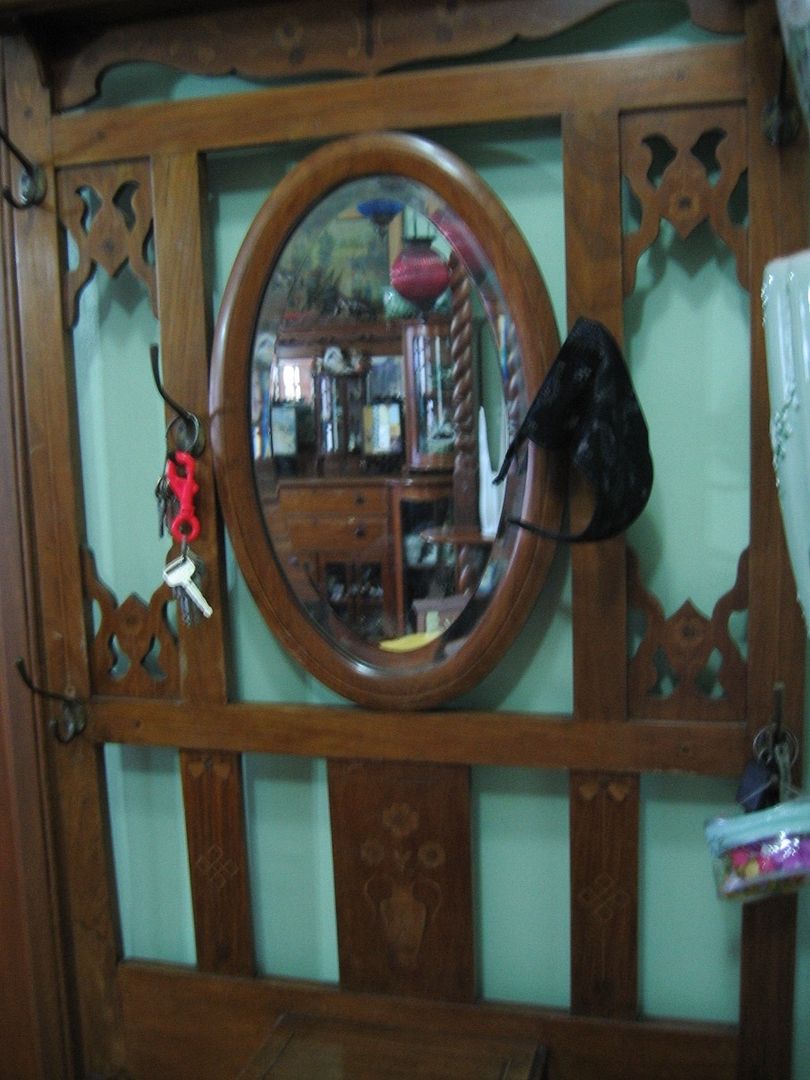
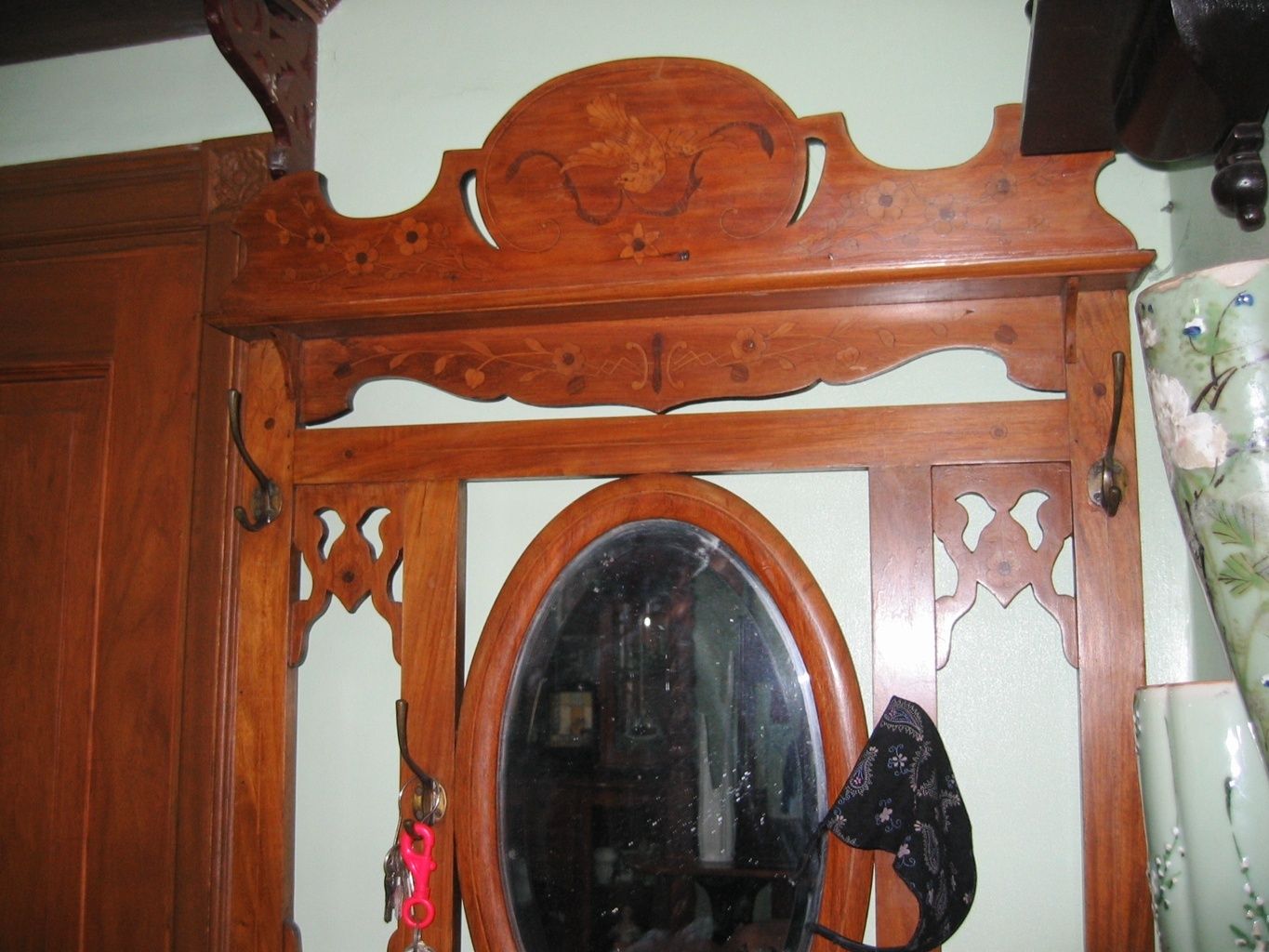

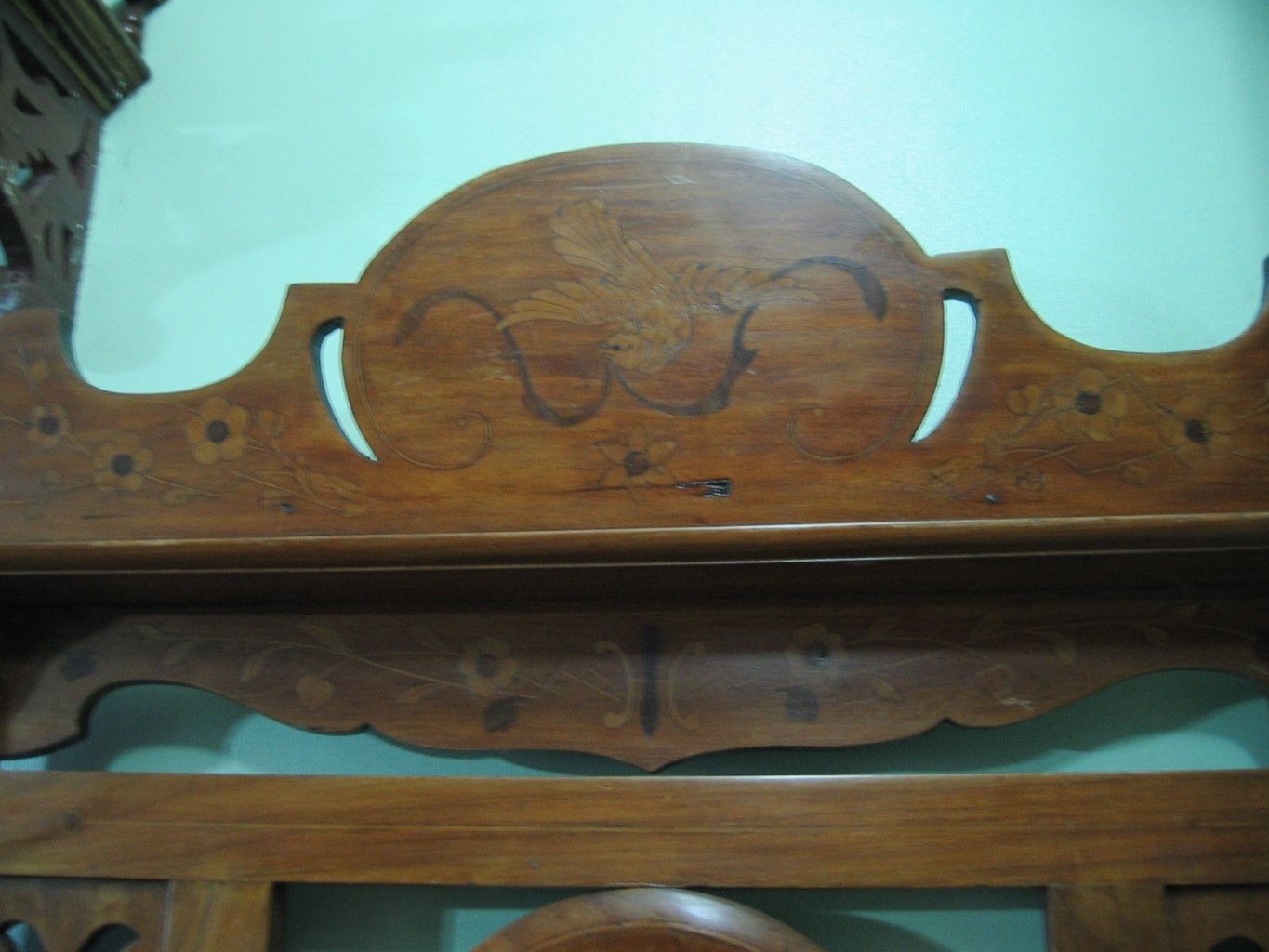
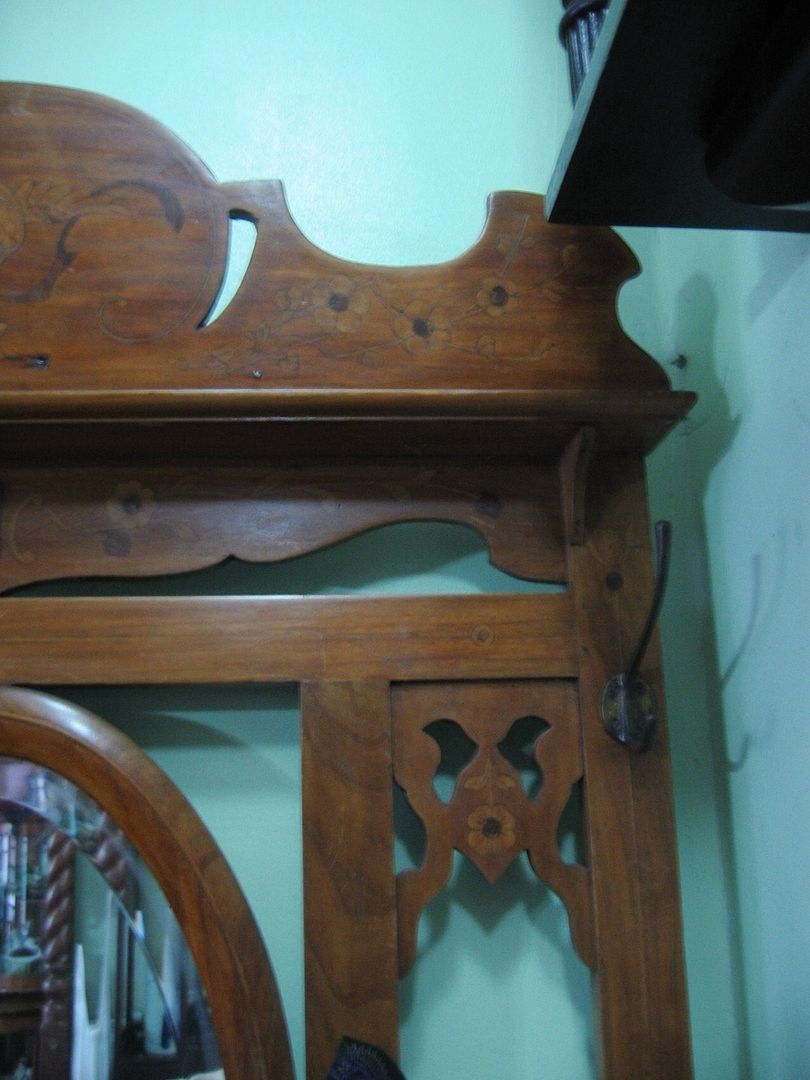
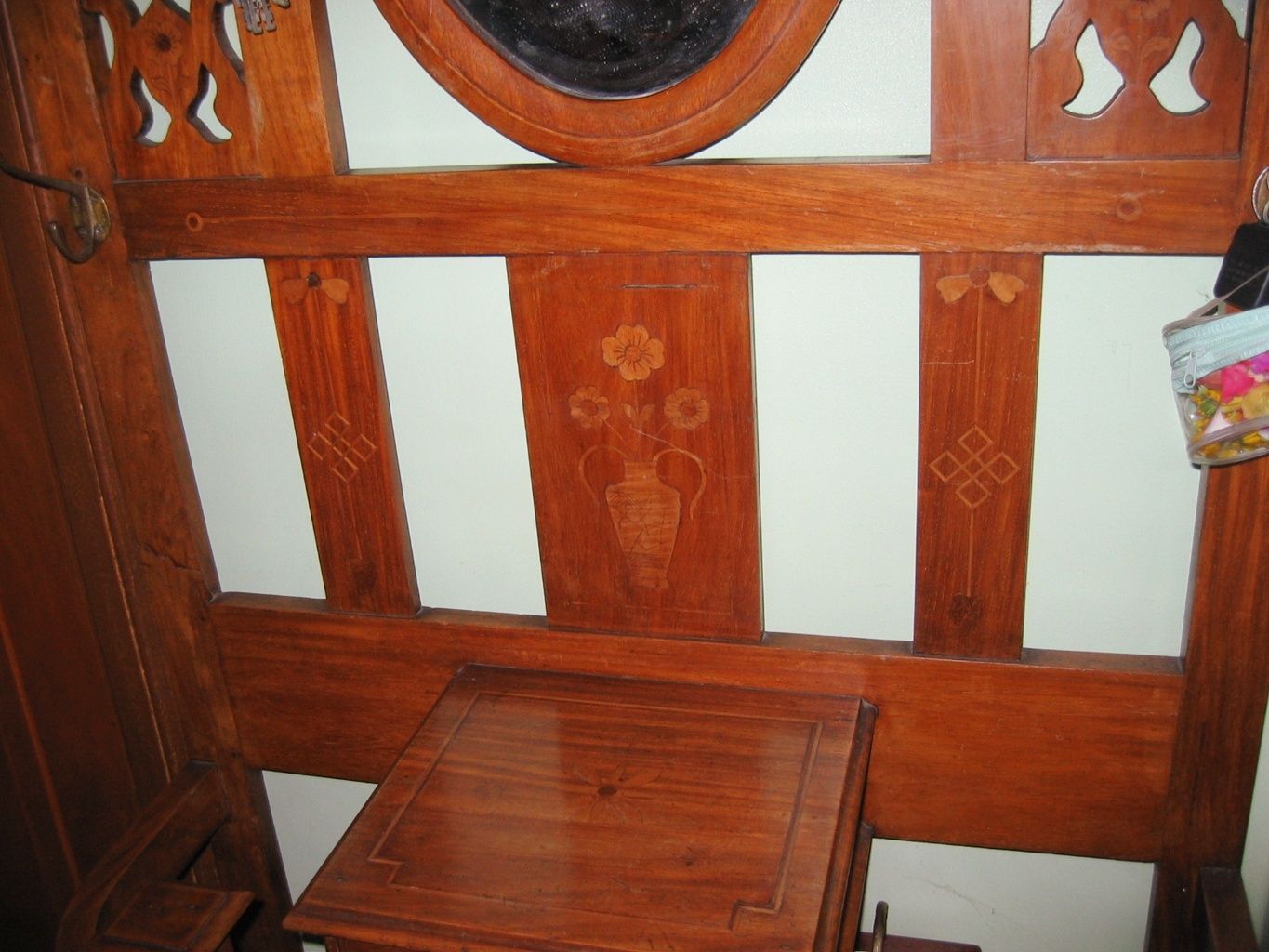
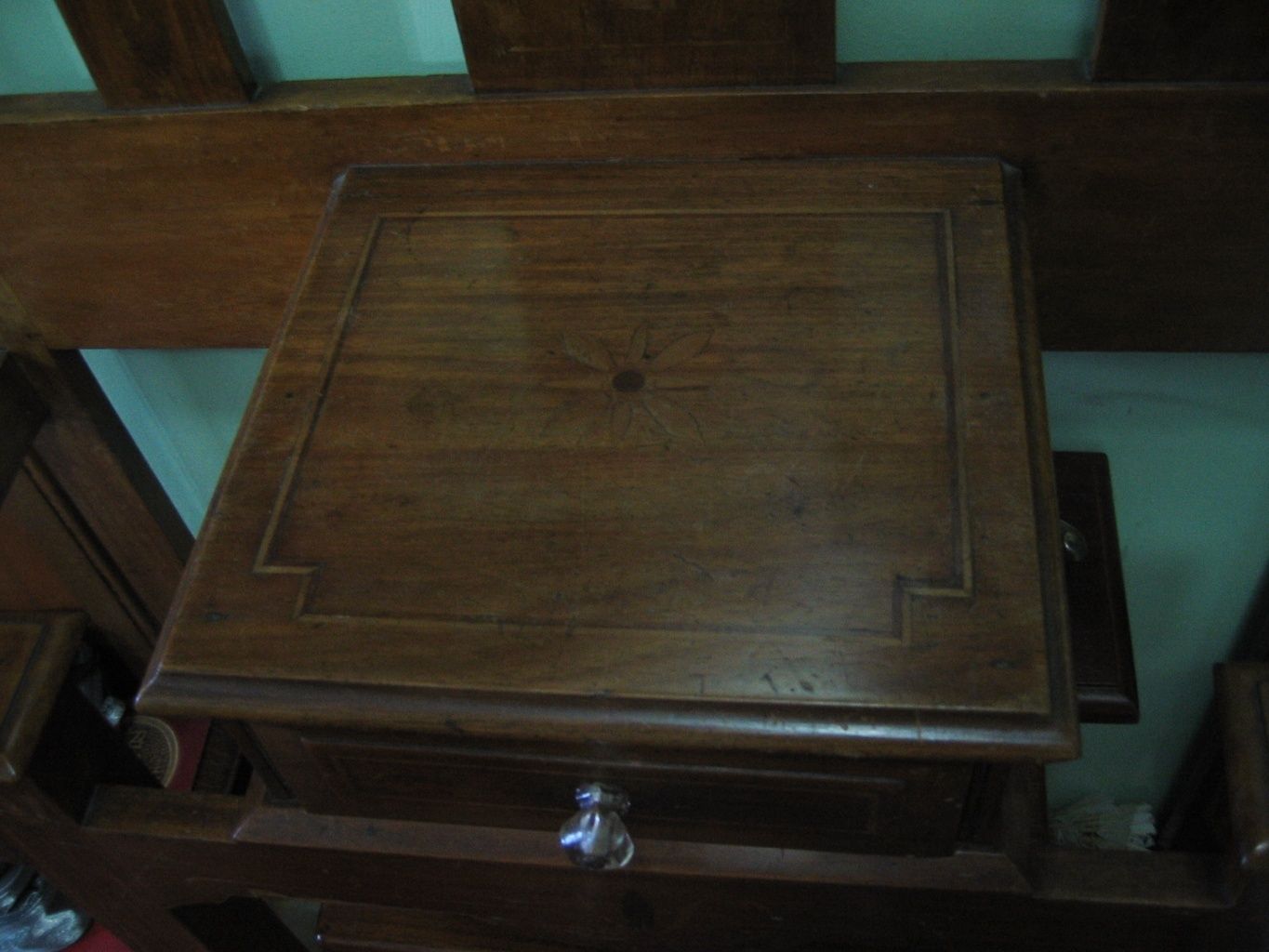
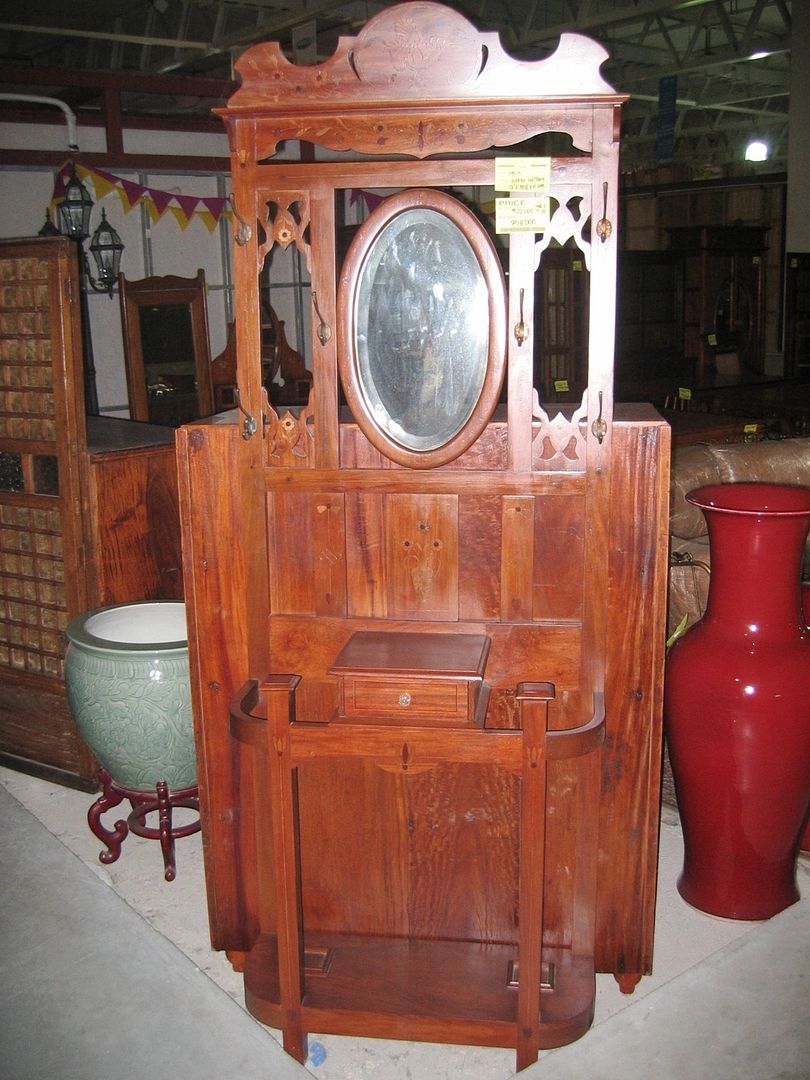
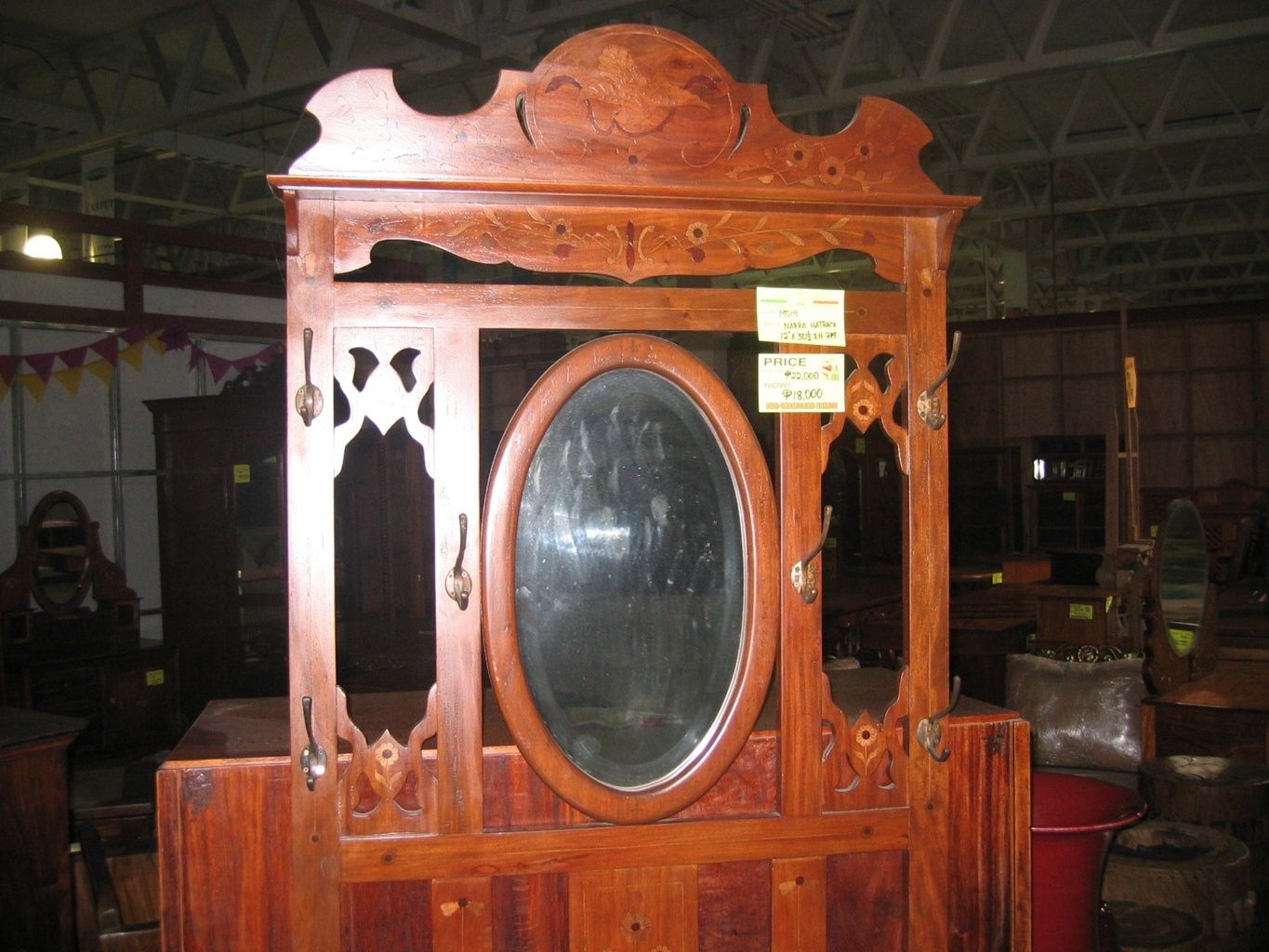


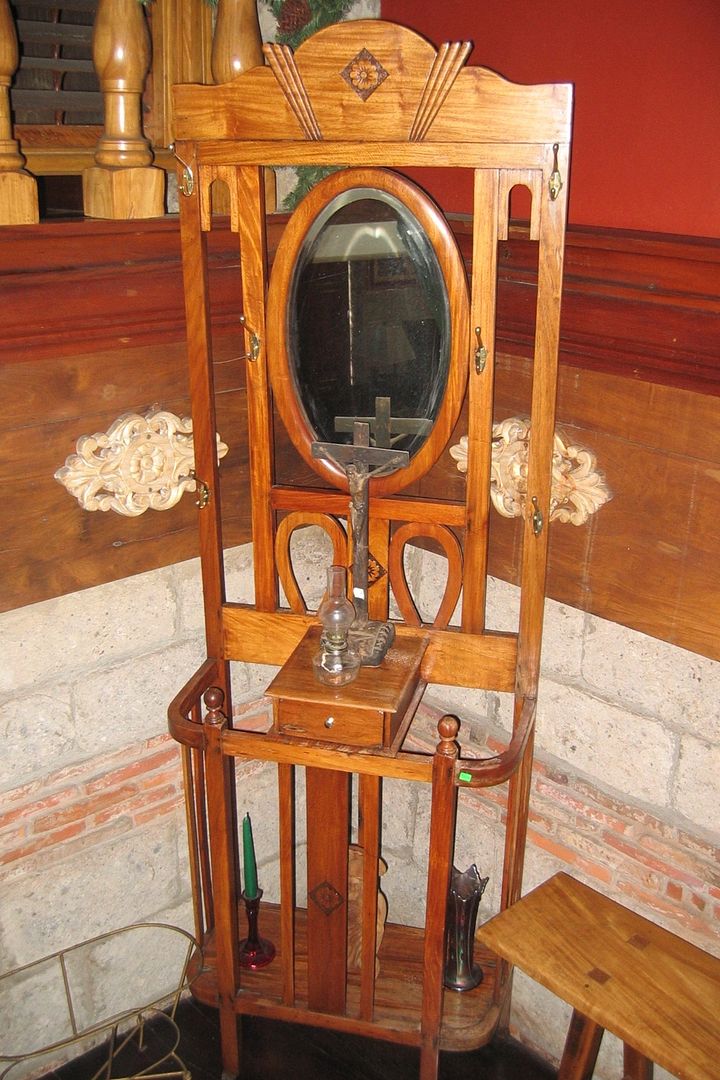
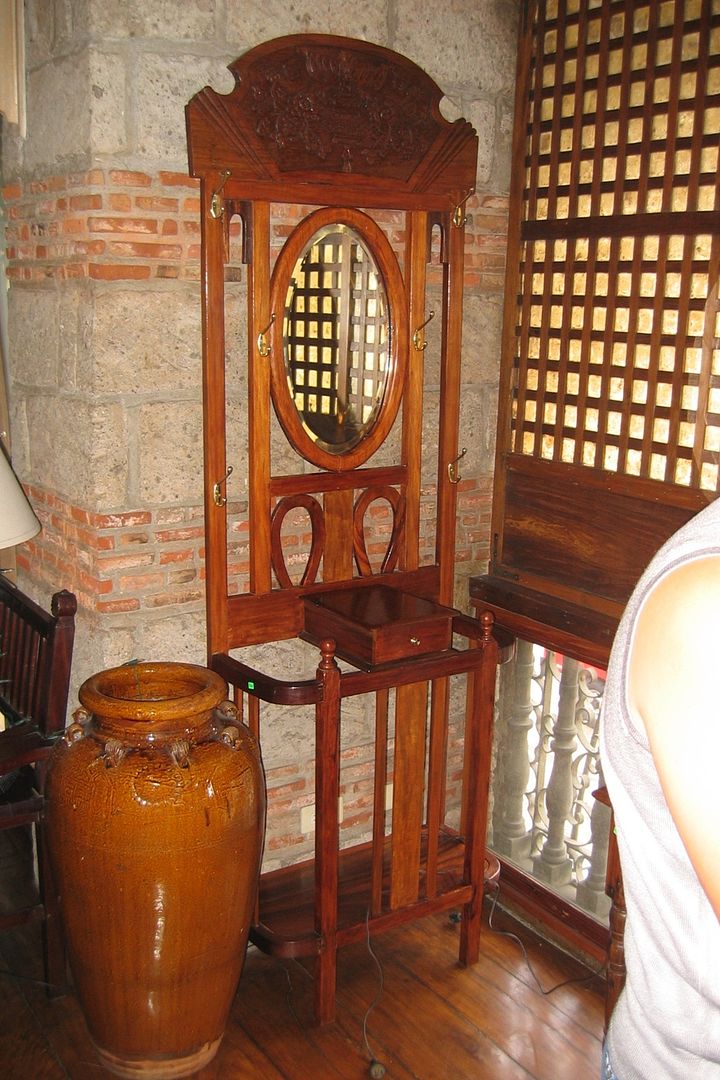

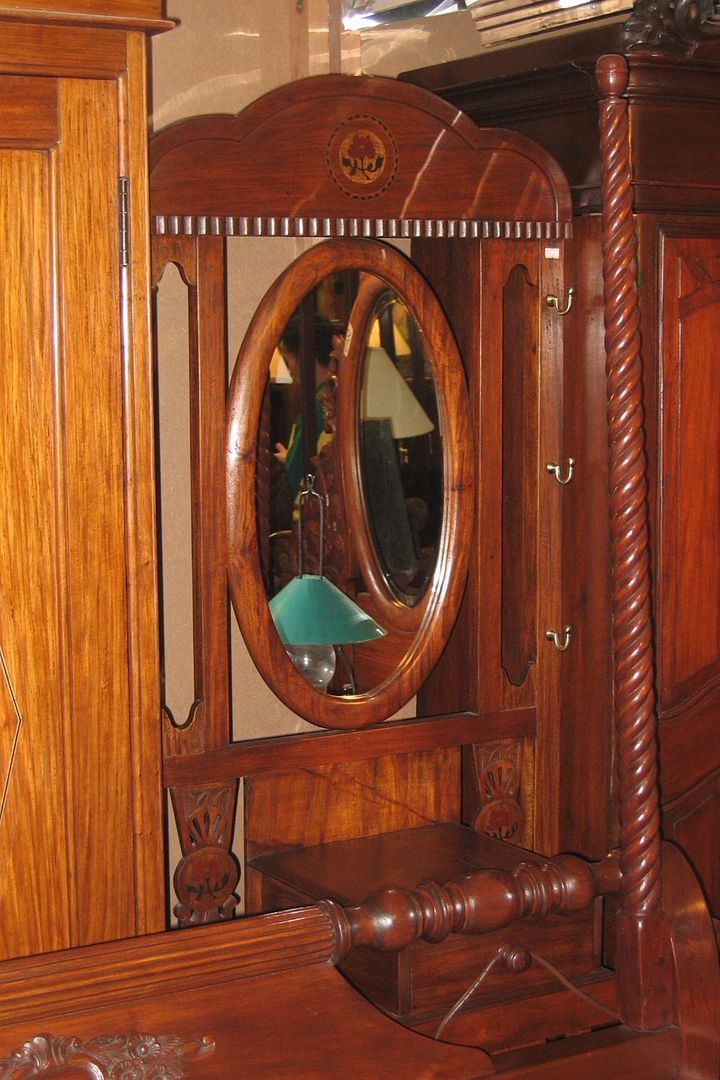
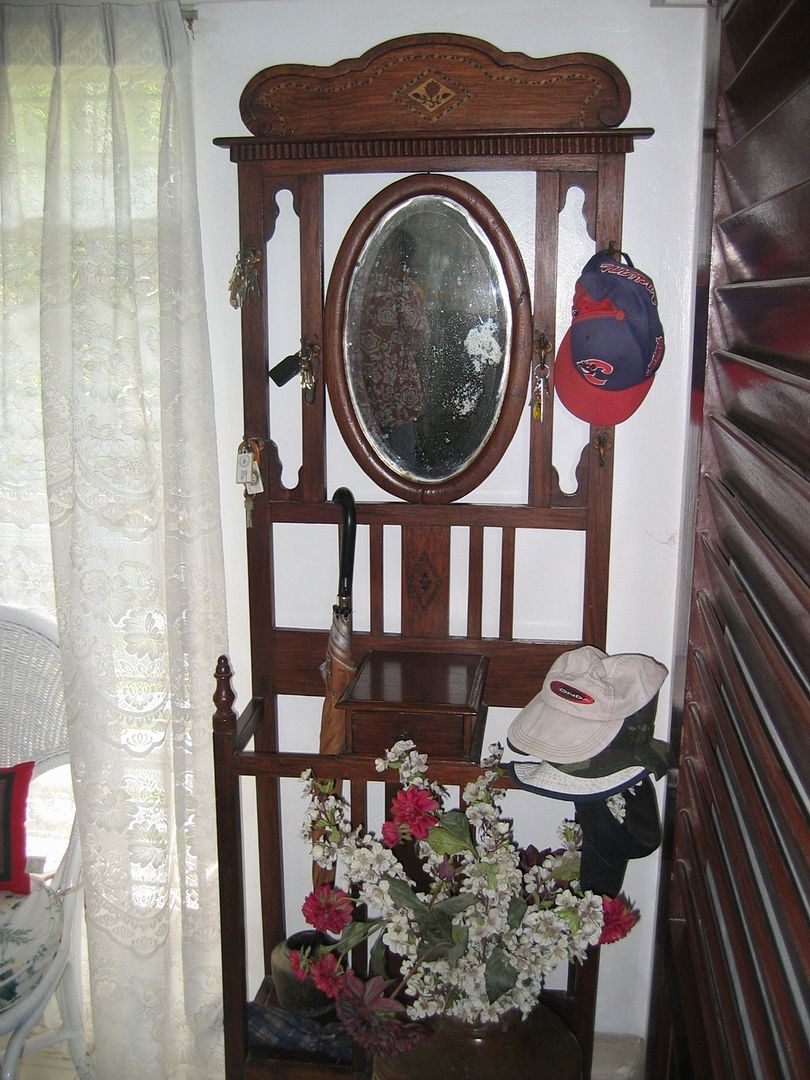


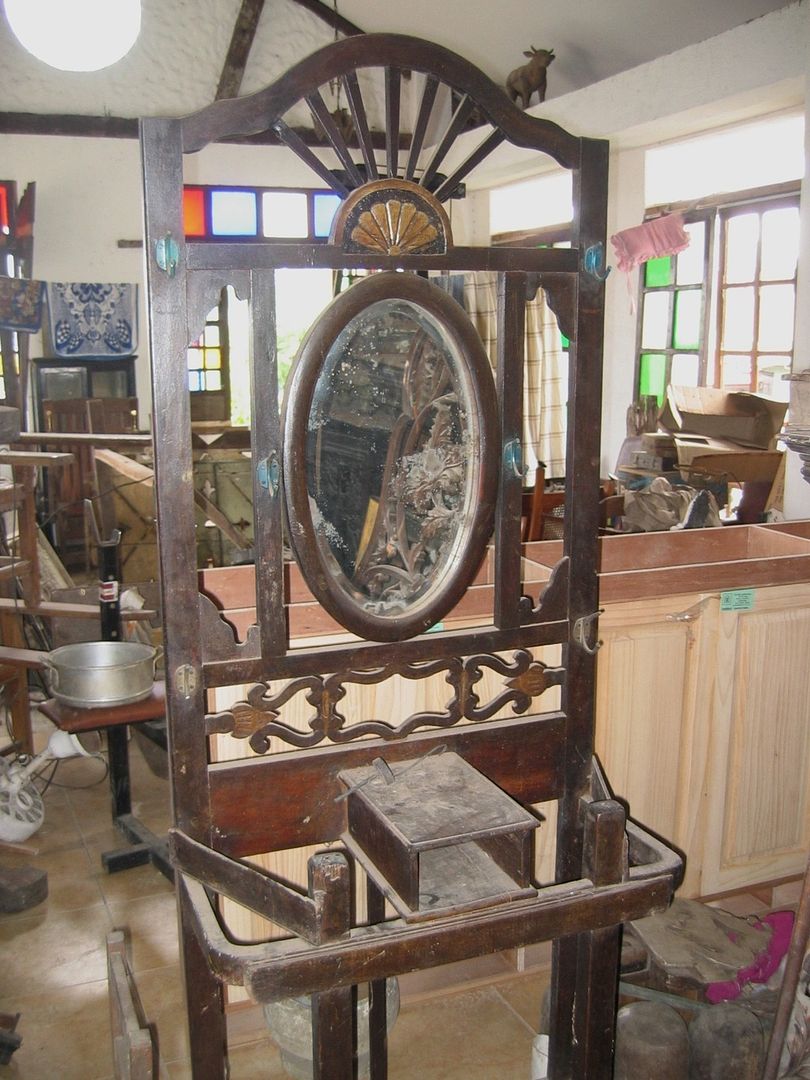
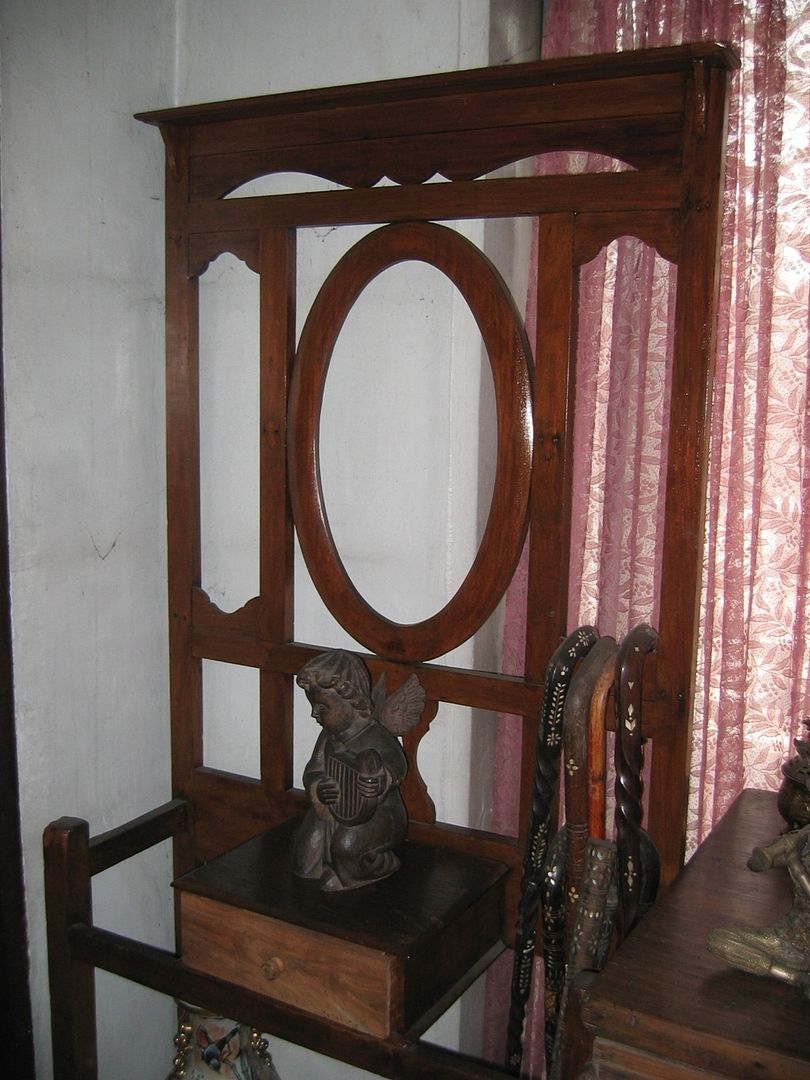





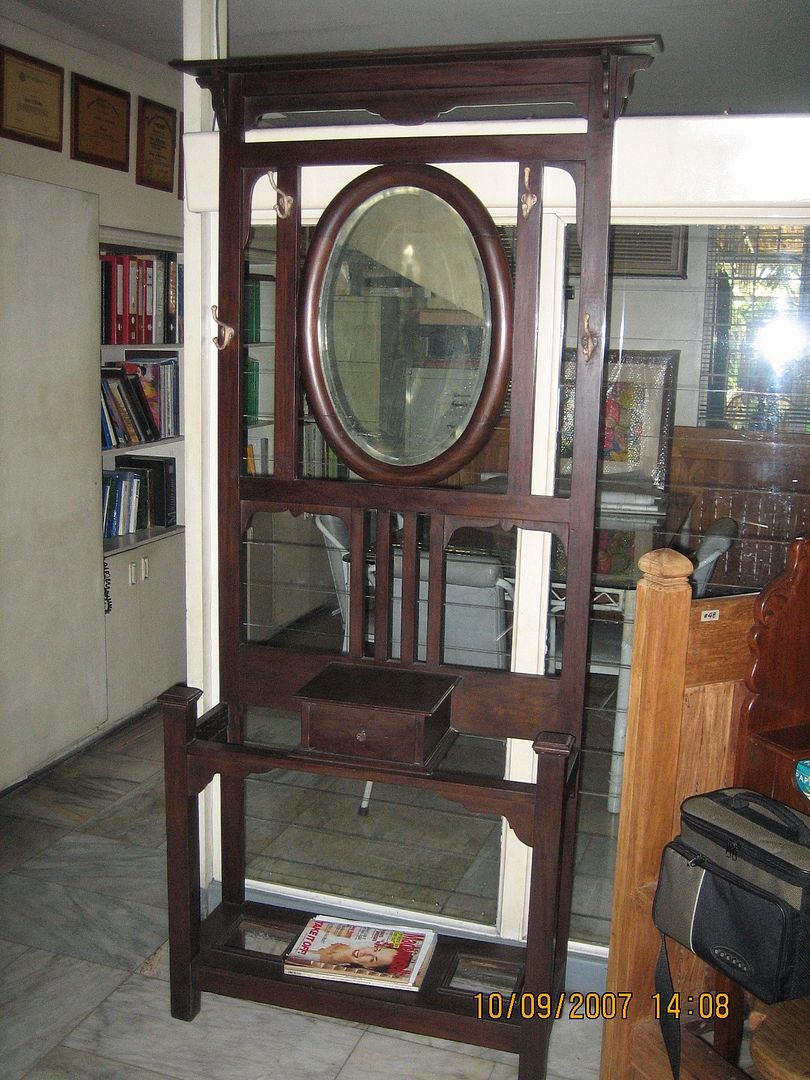
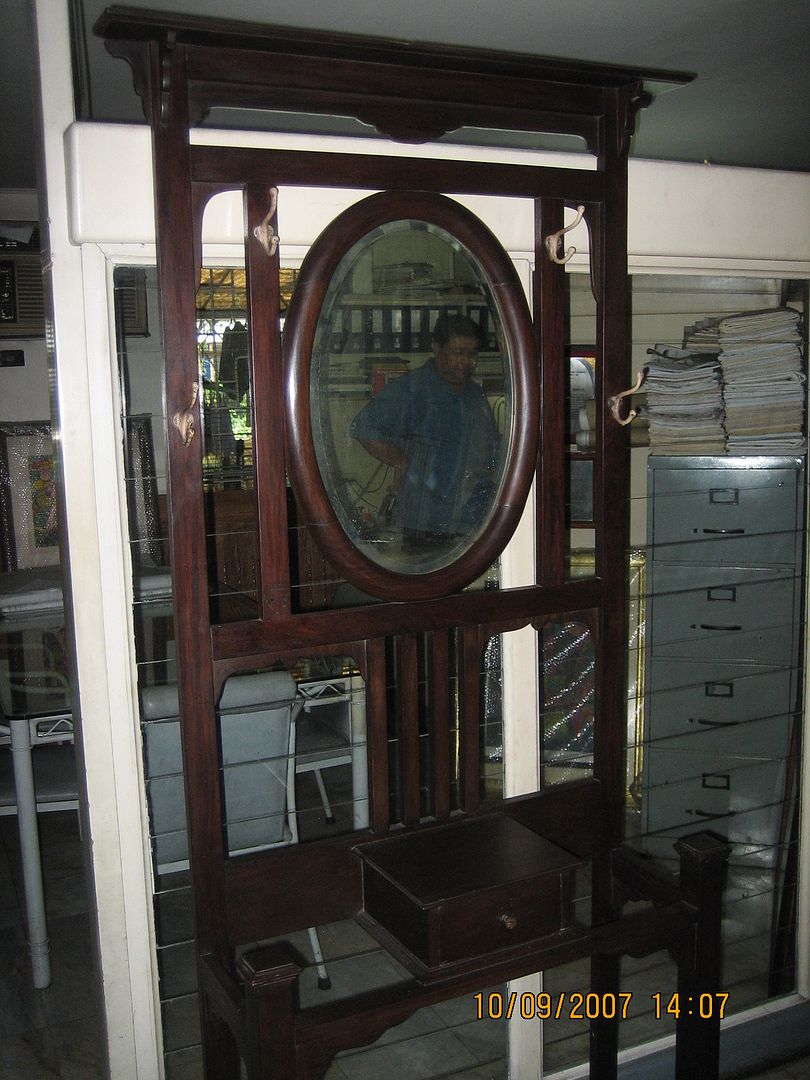


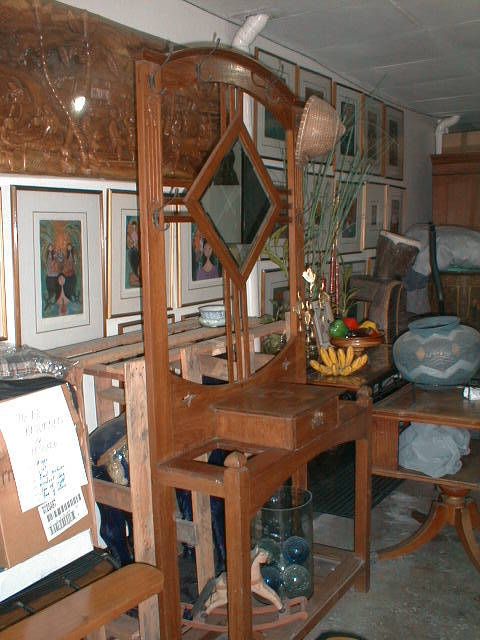
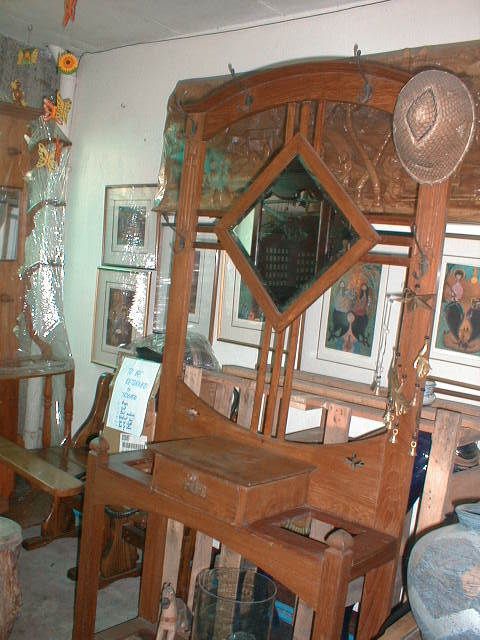
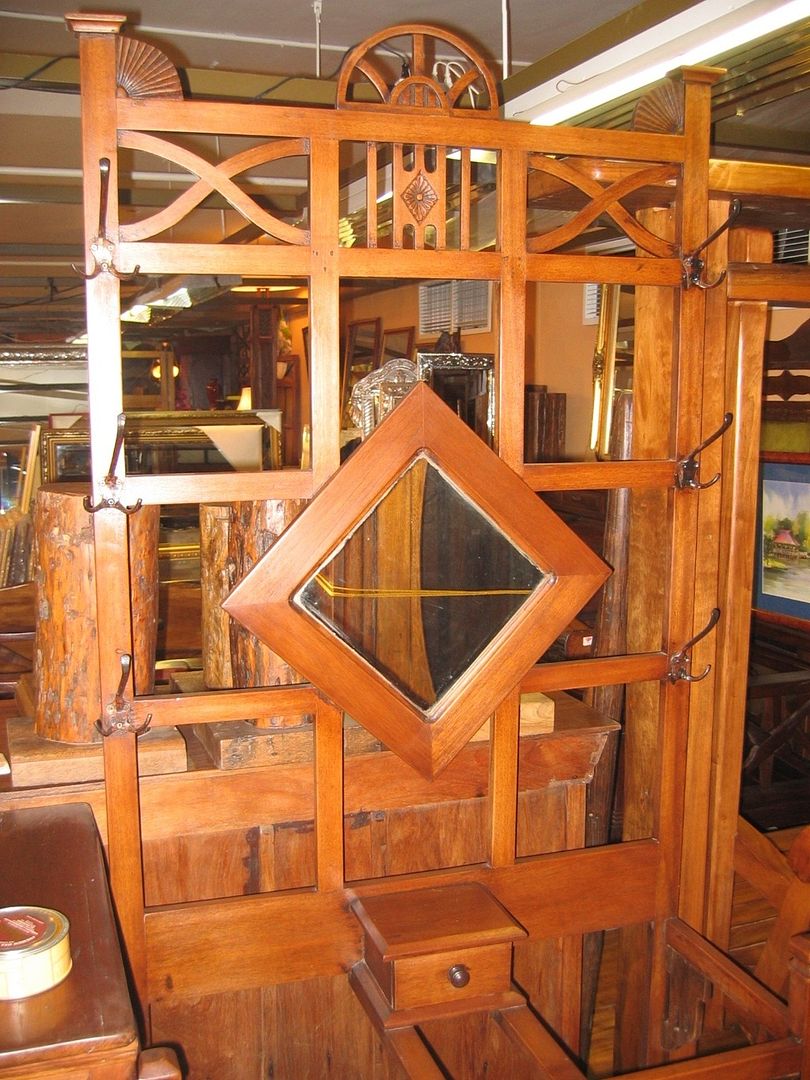
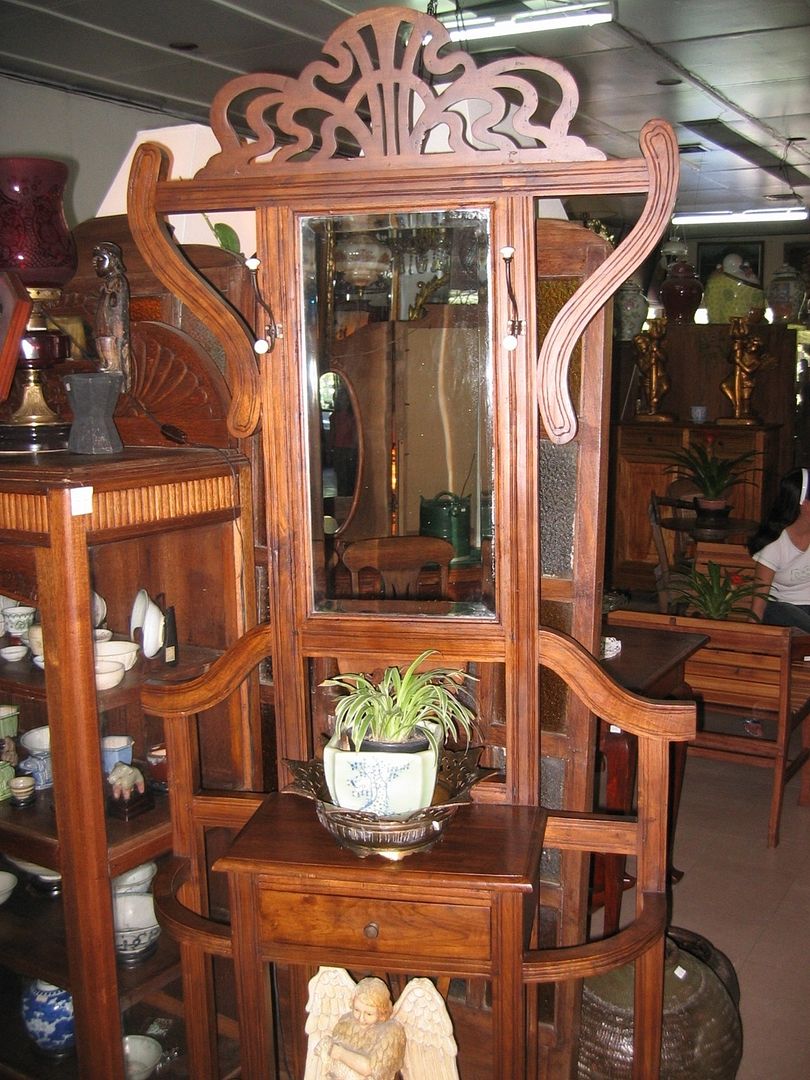
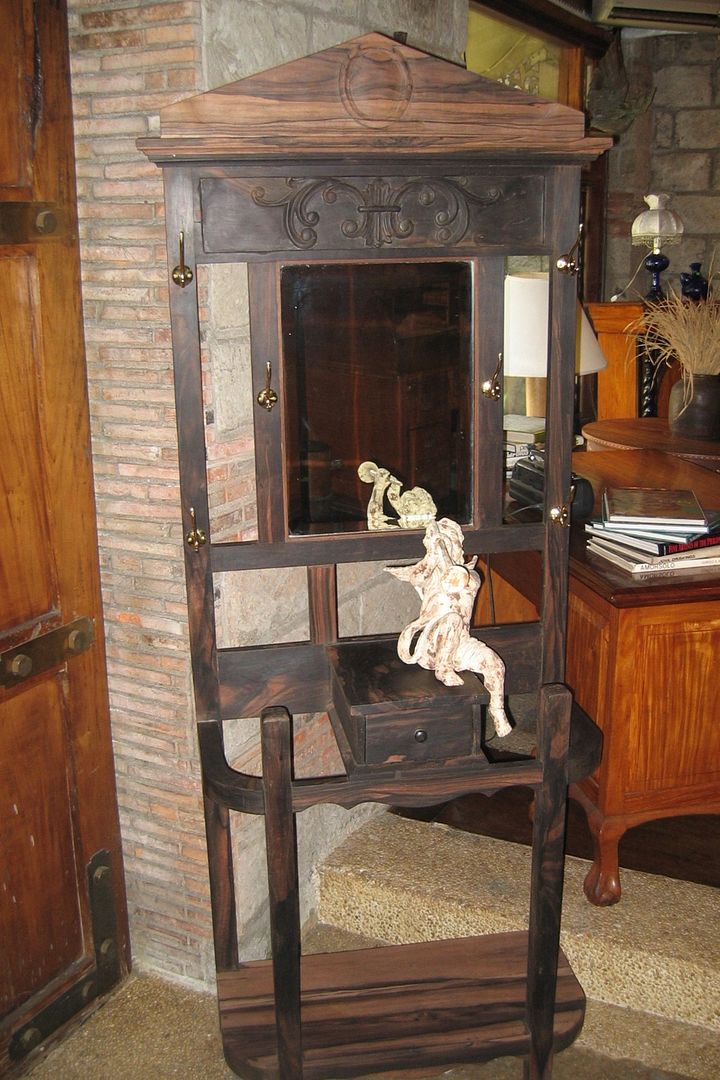

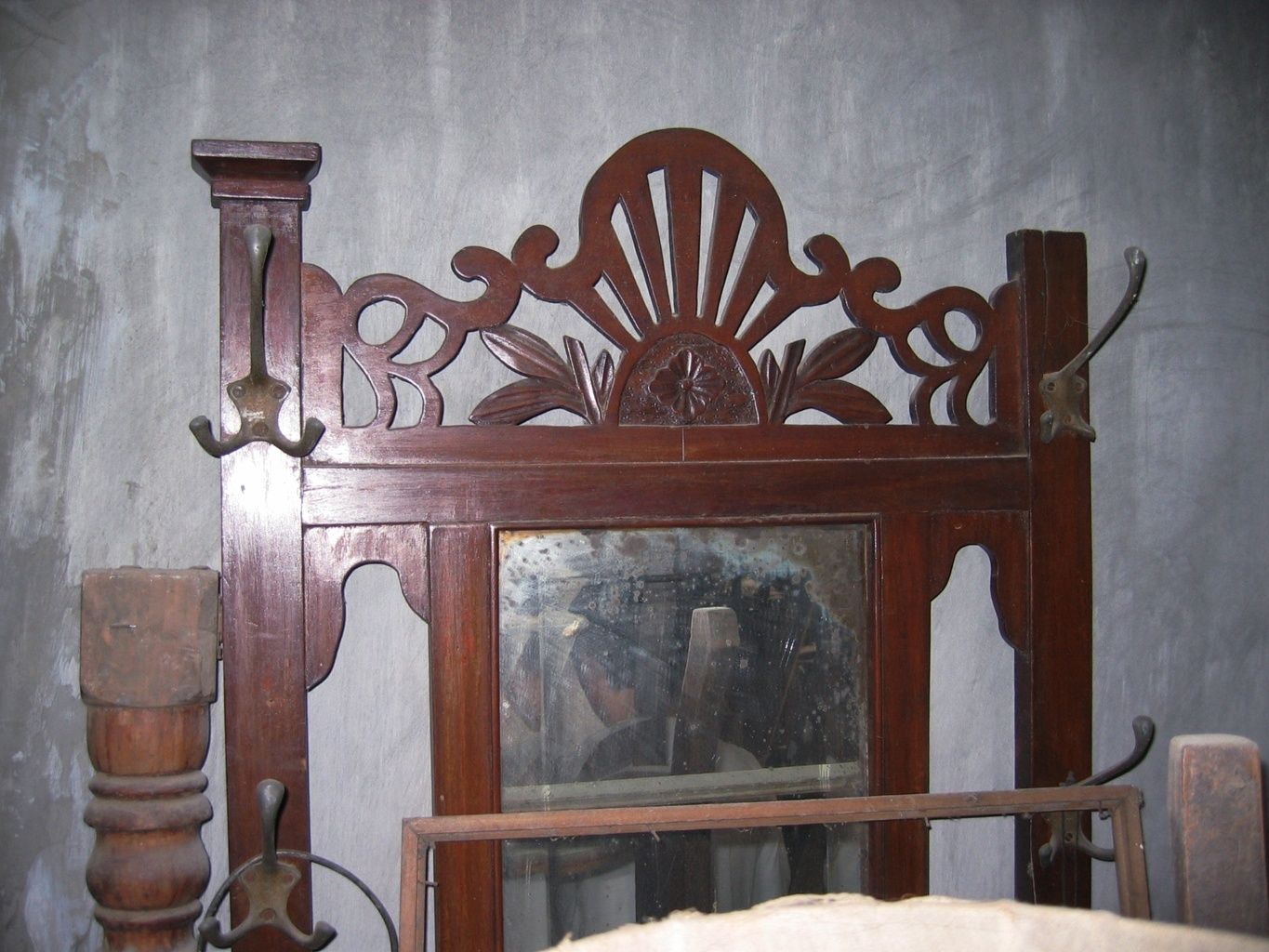

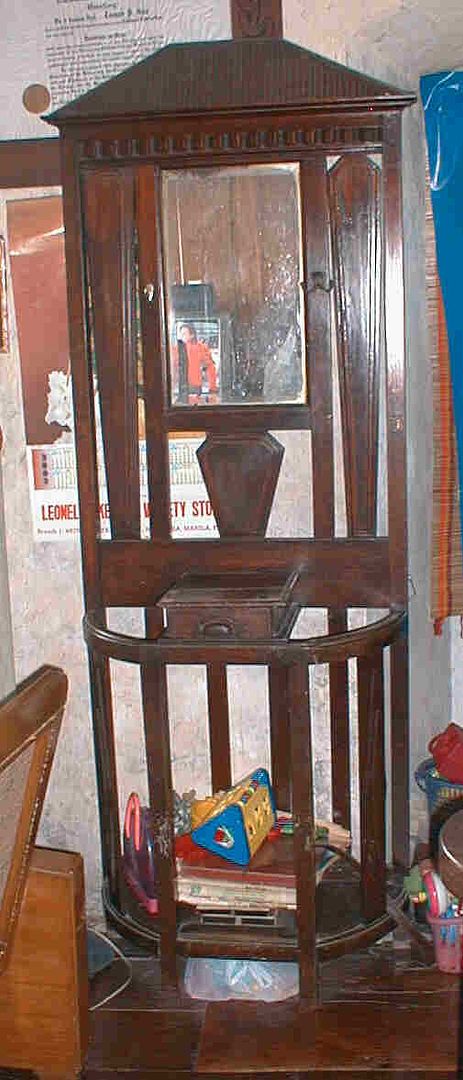

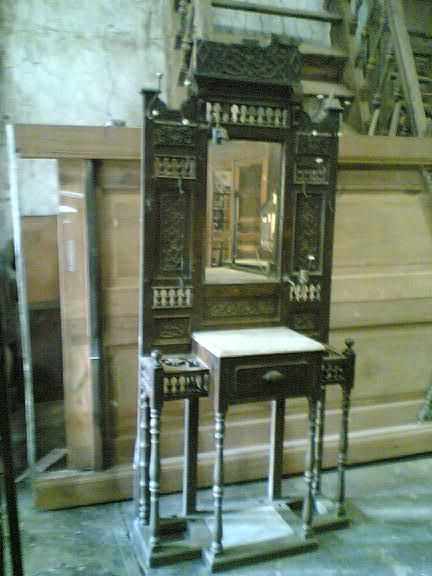
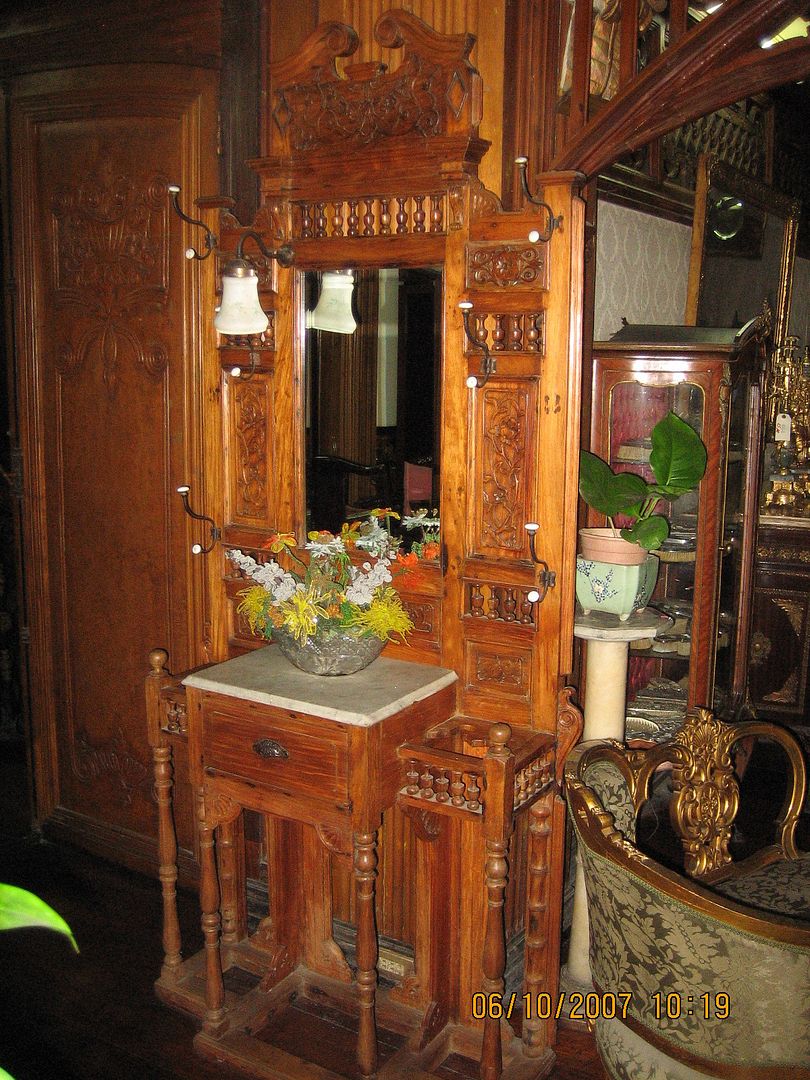
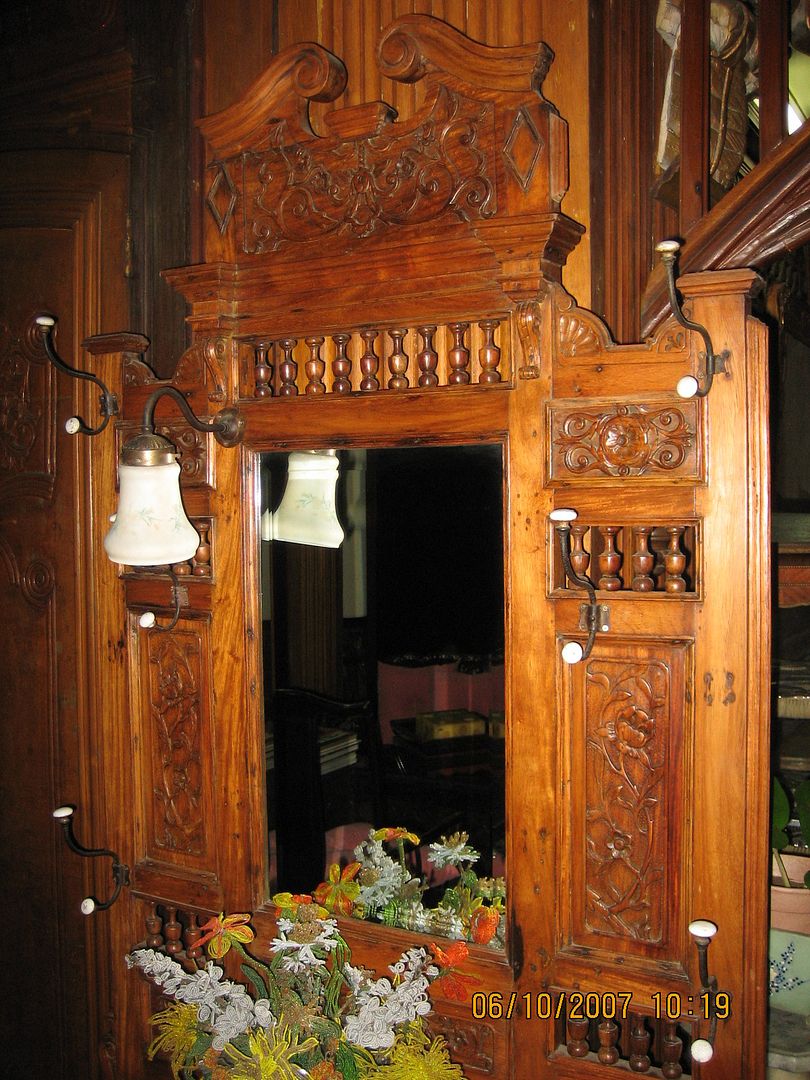
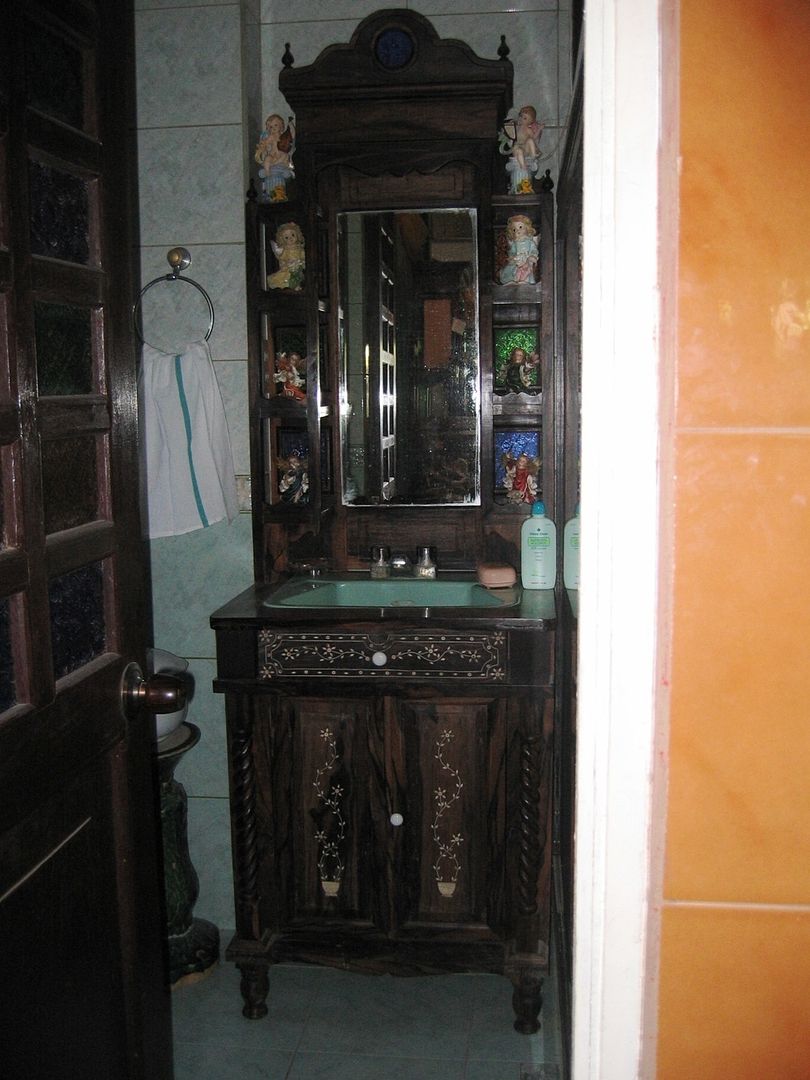
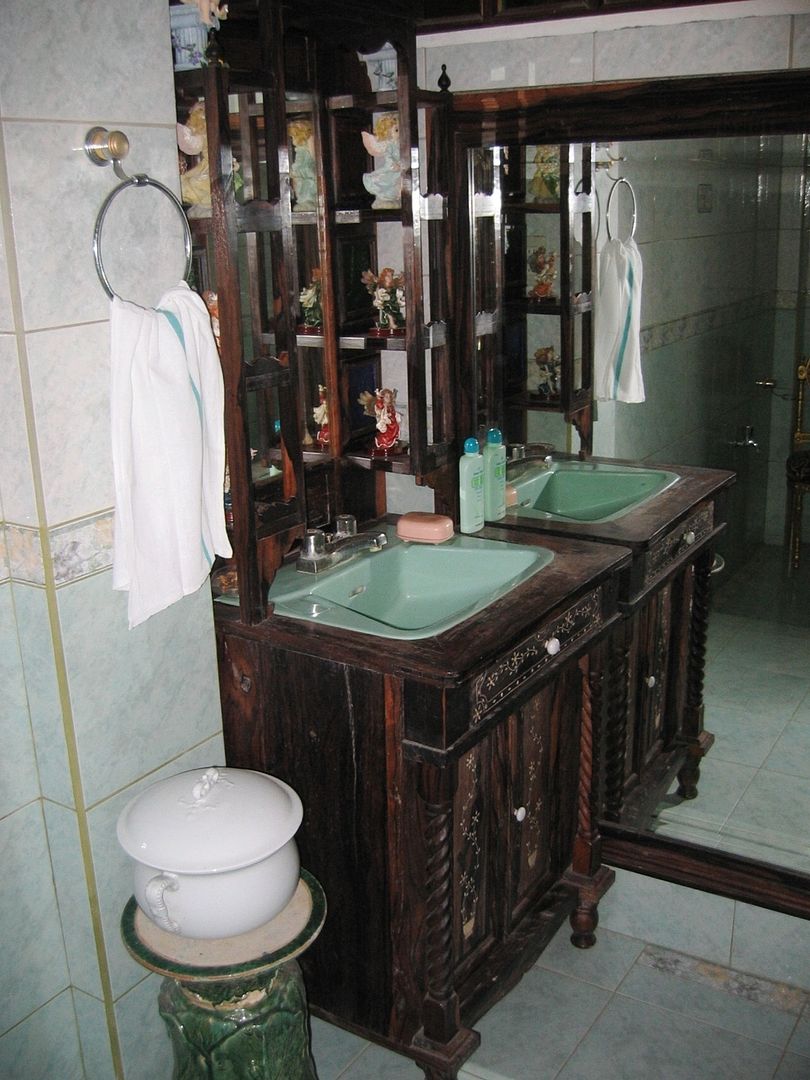
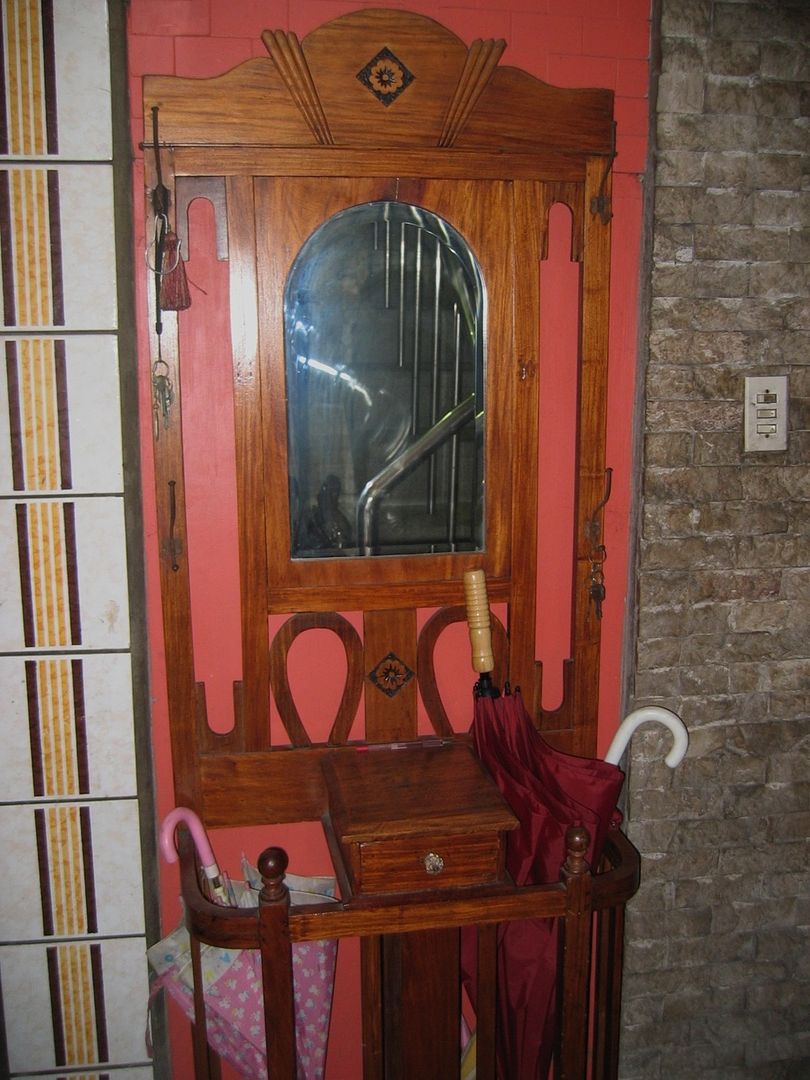
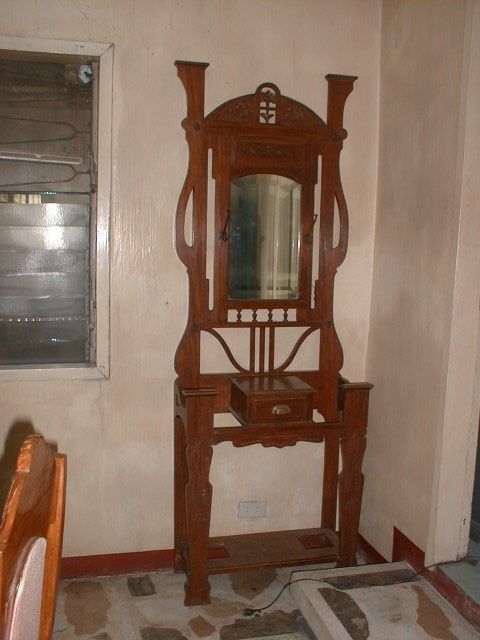



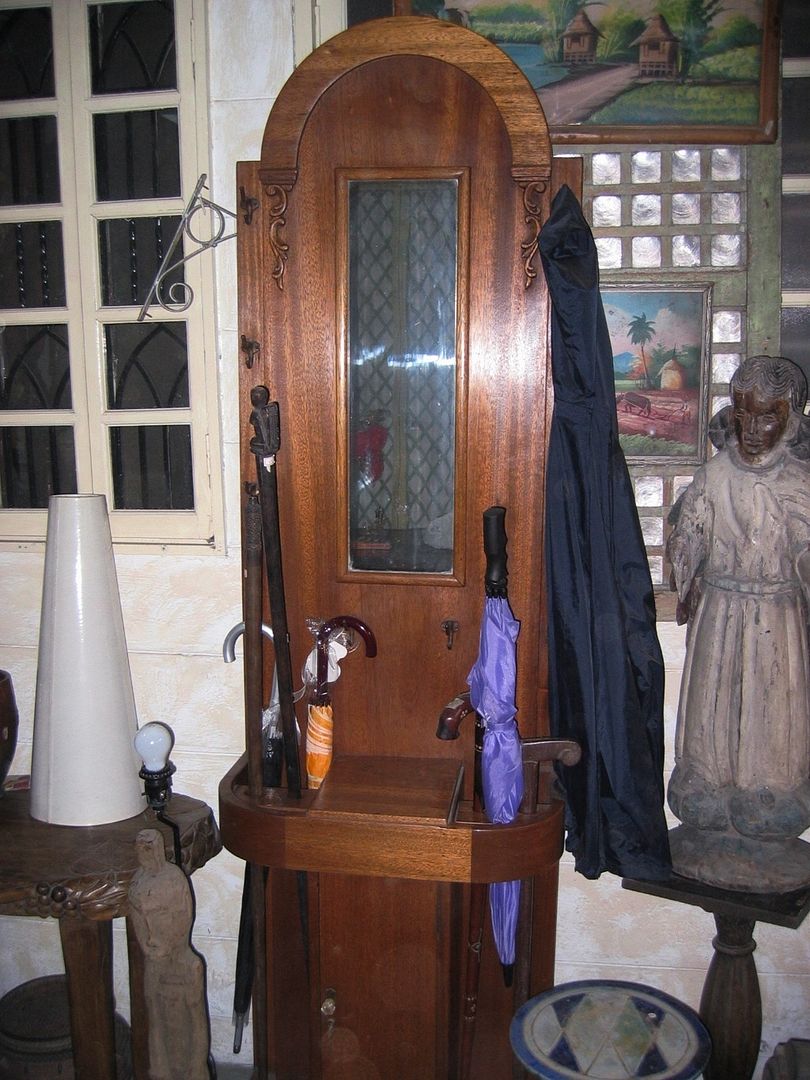
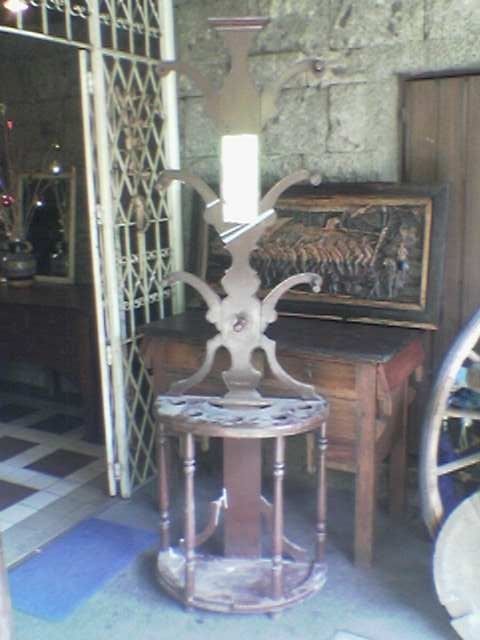
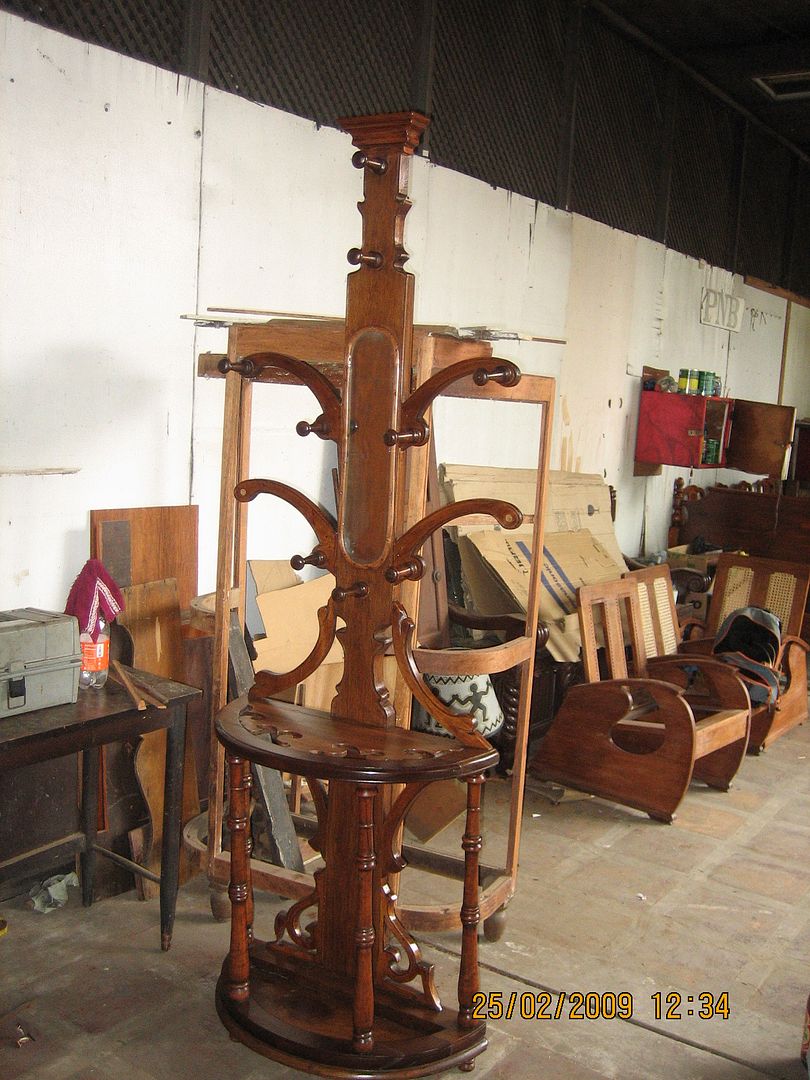

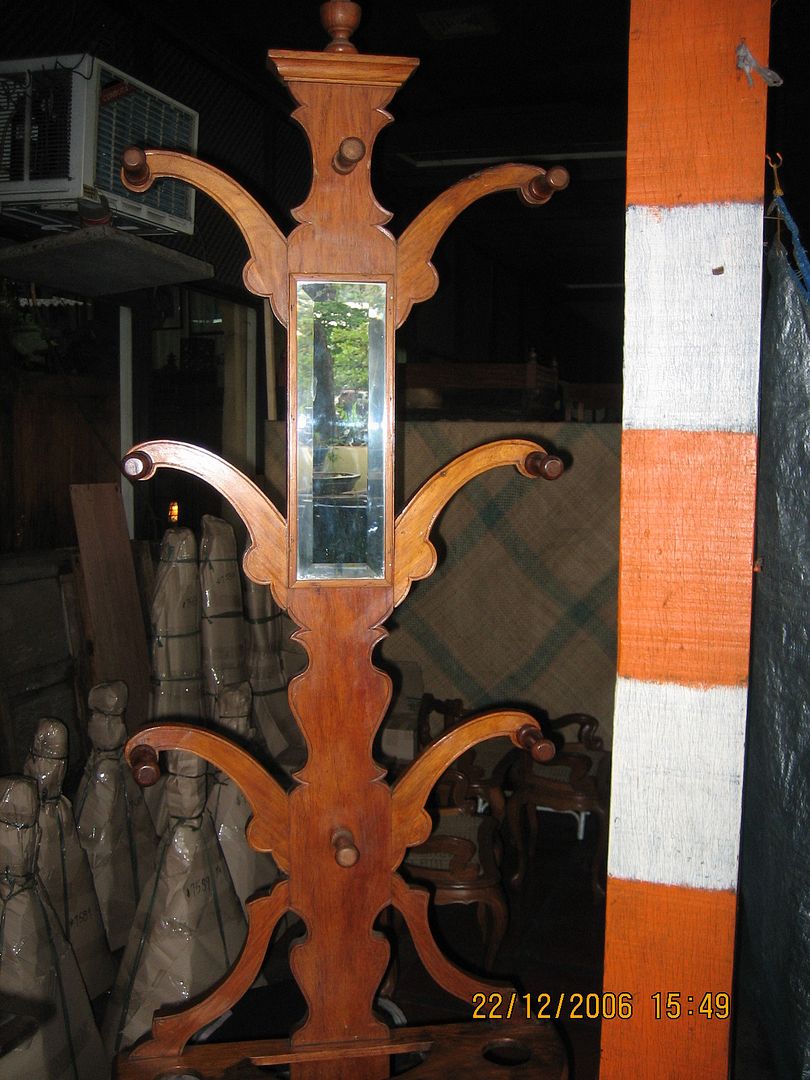







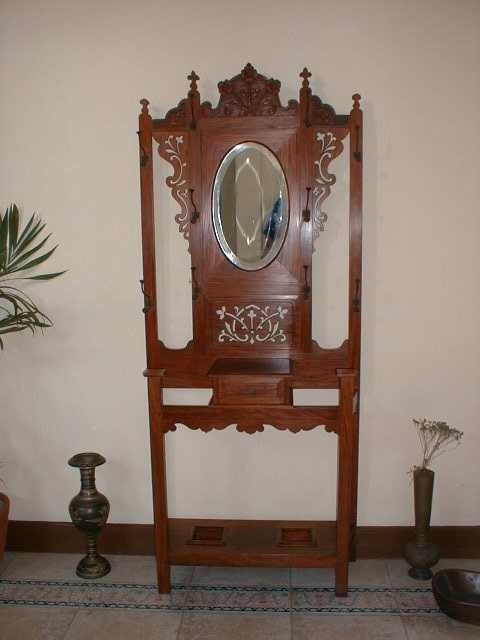
No comments:
Post a Comment